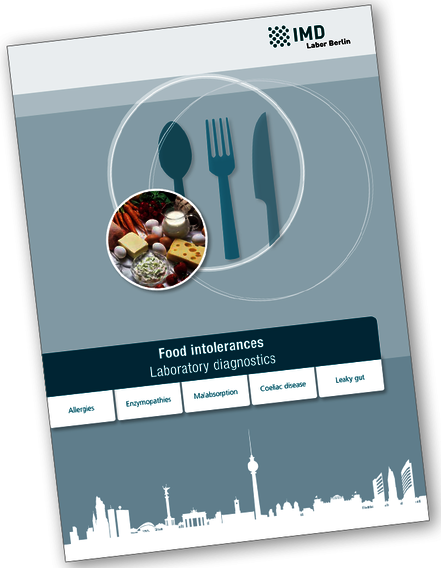Food intolerances - What should be considered if allergy diagnostics do not provide an explanation?
Food intolerances are steadily increasing. Information about the frequency of those affected in Germany varies between 4 and 11 %. But every intolerance is by no means based on a true allergy.
If a type I allergy (no specific IgE to food in the RAST, negative prick test) and type IV reactions (negative LTT food screening) have been by and large excluded, immunological cross-reactivity and non-allergic forms of food intolerance should be considered:
Non-allergy related food intolerances:
1. For those with pollen allergies, immunological cross-reactions can mimic food allergies, e.g., birch pollen-nutpome fruit syndrome, celery-mugwort-spice syndrome. In patients with a latex sensitisation, latex-banana-avocado syndrome should be considered (see pdf document).
2. An intolerance to histamine-rich foods (histaminosis) based on a histamine metabolic disorder is not uncommon. The cause is a deficiency in the enzyme diamine oxidase.
3. Malabsorption disorders due to enzyme defects in the intestinal mucosa. The most important medical conditions are lactose intolerance, fructose malabsorption and (more rarely) fructose intolerance.
4. Gluten intolerance (coeliac disease) – atrophy of the villi in the small intestine induced by gluten.
Other rarer causes include:
5. An allergy to moulds (primarily Aspergillus) can mimic a food allergy because these fungi can afflict herbs, cherries, grapes, rye and wheat breads, barley, corn, rice and fruit juices as saprophytes without the foods being obviously spoilt.
6. For some nickel allergy sufferers, the nickel present in food and drinks can cause or intensify a wide range of symptoms. Nickel-containing foods include: chocolate, nuts, wholemeal products or some types of fruit and vegetables. Diagnosis is done using the LTT for nickel. Diagnostic and dietary information is available from the Institute for Medical Diagnostics.
7. Rarer food allergies due to immunological cross-reactivities include:
| Inhalation allergens | Foods not tolerated |
|---|---|
| Grass and grain pollen | Flour, bran, tomato, pulses |
| Ficus benjamina | Fig |
| Poultry feathers | Egg, poultry meat |
| Animal epithelia | Cow’s milk, meat, offal |
| House dust mite | Crustacean, snails |
The most common foods ‘responsible’ for the medical conditions indicated above as well as the corresponding diagnostic recommendations are shown on the reverse page.
In our information brochure "Food intolerances", you will find a detailed description of the laboratory diagnostics for suspected food intolerances.
This brochure is available in both German and English, and can be ordered free of charge by calling +49 (0)30 77 001-220 or by sending an email to si.service@imd-berlin.de.

